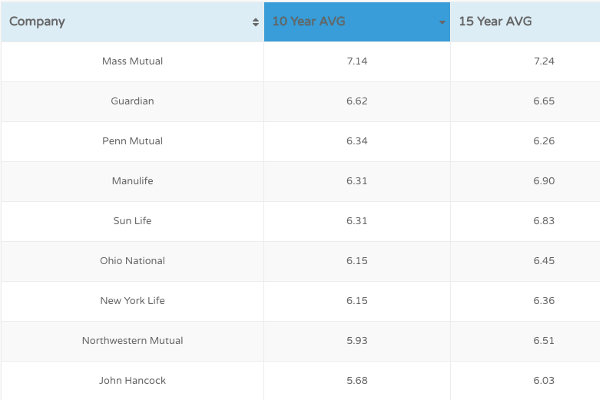Index Universal Life Insurance (IUL) is a type of permanent life insurance that offers policyholders the opportunity to participate in the growth of the financial markets. Unlike traditional whole life insurance, which provides a fixed interest rate, IUL policies allow policyholders to allocate a portion of their premium payments to a cash value account that is linked to a designated stock market index, such as the S&P 500. In this article, we will explore the concept of Index Universal Life Insurance and how it can potentially unlock the potential of market growth for policyholders.
Click below to get a Quote Now
Get Me A Quote
Flexibility: IUL policies offer flexibility in premium payments and death benefit options. Policyholders have the ability to adjust their premium payments within certain limits and can customize their death benefit to suit their changing needs.
Tax Advantages: Like other types of permanent life insurance, the death benefit paid out to beneficiaries is generally income tax-free. Additionally, the cash value growth in an IUL policy is typically tax-deferred, meaning policyholders do not have to pay taxes on the growth until they withdraw or borrow against the cash value.
Protection: Just like other forms of life insurance, IUL provides a death benefit that can financially protect your loved ones in the event of your passing. This can help cover funeral expenses, outstanding debts, and provide financial security for your family.
Considerations and Risks: While Index Universal Life Insurance offers potential benefits, it's essential to understand the associated considerations and risks:
Market Volatility: As IUL policies are linked to the performance of stock market indexes, policyholders are exposed to market volatility. If the selected index performs poorly, the cash value account may not grow as anticipated, or it may even decrease in value.
Fees and Charges: IUL policies often have additional fees and charges compared to traditional whole life policies. These fees may include administrative fees, cost of insurance charges, and other policy-related expenses. It's crucial to review and understand the fee structure before purchasing an IUL policy.
Surrender Charges: IUL policies typically have surrender charges, which are fees imposed if you decide to cancel or surrender your policy within a specific period. These charges can reduce the cash value available for withdrawal.
Policy Illustrations: When considering an IUL policy, it's important to review policy illustrations provided by the insurance company. These illustrations project the potential growth of the cash value account based on various assumptions. However, it's important to remember that these illustrations are not guarantees and are subject to market fluctuations.
Click below to get a Quote Now
Get Me A Quote
Understanding Index Universal Life Insurance:
Index Universal Life Insurance combines the benefits of life insurance protection with the potential for cash value accumulation based on market performance. The cash value account in an IUL policy is linked to a specific stock market index, and the policyholder's account earns interest based on the performance of that index. If the index performs well, the cash value account can grow at a higher rate compared to traditional whole life policies. However, it's important to note that if the index performs poorly, the cash value account may not grow, or it may even experience a decrease in value.Market Participation and Capped Returns:
One key feature of Index Universal Life Insurance is the participation rate and cap rate. The participation rate determines the percentage of the index's growth that is credited to the policyholder's cash value account. For example, if the participation rate is set at 80%, and the index grows by 10%, the policyholder's cash value account would be credited with 8% (80% of 10%). On the other hand, the cap rate sets a limit on the maximum interest that can be credited to the cash value account, even if the index performs exceptionally well. This feature protects policyholders from excessive market volatility and ensures a degree of stability in their policy's cash value growth.Grow with certainty. Explore Index Universal Life today!
Click below to get a Quote Now
Get Me A Quote
Benefits of Index Universal Life Insurance:
Potential for Higher Returns: The primary advantage of IUL is the potential for higher returns compared to traditional whole life policies. By linking the cash value account to market performance, policyholders have the opportunity to accumulate greater cash value over time.Flexibility: IUL policies offer flexibility in premium payments and death benefit options. Policyholders have the ability to adjust their premium payments within certain limits and can customize their death benefit to suit their changing needs.
Tax Advantages: Like other types of permanent life insurance, the death benefit paid out to beneficiaries is generally income tax-free. Additionally, the cash value growth in an IUL policy is typically tax-deferred, meaning policyholders do not have to pay taxes on the growth until they withdraw or borrow against the cash value.
Protection: Just like other forms of life insurance, IUL provides a death benefit that can financially protect your loved ones in the event of your passing. This can help cover funeral expenses, outstanding debts, and provide financial security for your family.
Considerations and Risks: While Index Universal Life Insurance offers potential benefits, it's essential to understand the associated considerations and risks:
Market Volatility: As IUL policies are linked to the performance of stock market indexes, policyholders are exposed to market volatility. If the selected index performs poorly, the cash value account may not grow as anticipated, or it may even decrease in value.
Fees and Charges: IUL policies often have additional fees and charges compared to traditional whole life policies. These fees may include administrative fees, cost of insurance charges, and other policy-related expenses. It's crucial to review and understand the fee structure before purchasing an IUL policy.
Surrender Charges: IUL policies typically have surrender charges, which are fees imposed if you decide to cancel or surrender your policy within a specific period. These charges can reduce the cash value available for withdrawal.
Policy Illustrations: When considering an IUL policy, it's important to review policy illustrations provided by the insurance company. These illustrations project the potential growth of the cash value account based on various assumptions. However, it's important to remember that these illustrations are not guarantees and are subject to market fluctuations.
Conclusion:
Index Universal Life Insurance offers policyholders the potential to participate in market growth while providing the benefits of permanent life insurance protection. By linking the cash value account to a designated stock market index, policyholders can potentially enjoy higher returns compared to traditional whole life policies. However, it's crucial to carefully consider the associated risks and understand the policy's terms, including participation rates, cap rates, fees, and surrender charges. Consulting with a licensed insurance professional can help you determine if an IUL policy aligns with your financial goals and risk tolerance.Grow with certainty. Explore Index Universal Life today!
Click below to get a Quote Now
Get Me A Quote




